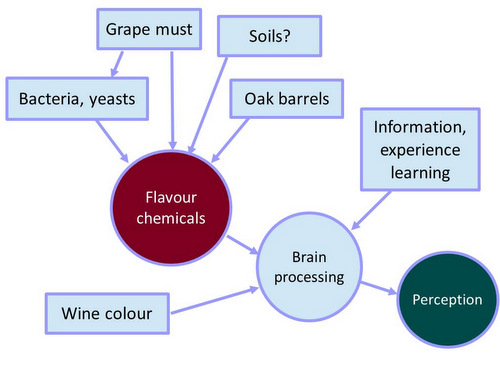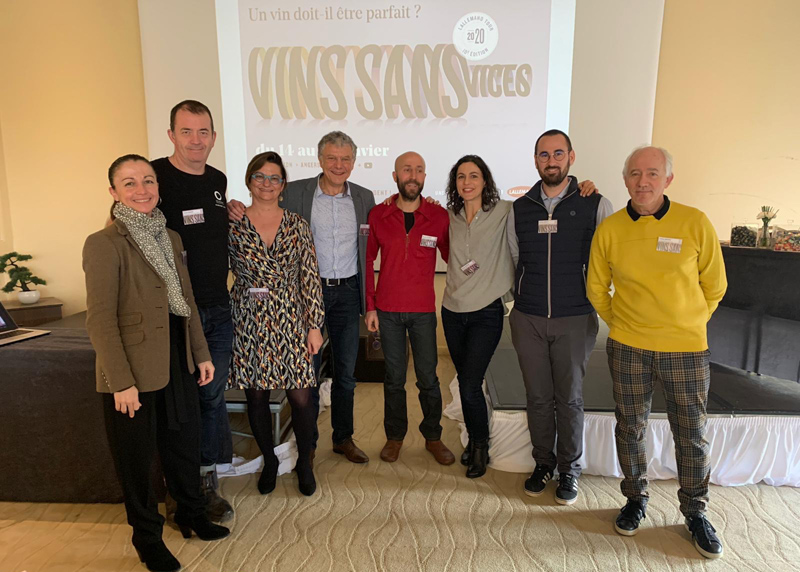Just working on this graphic, showing the relationship between wine flavour chemistry and the perception of wine.
Flavour chemicals come directly from grape must, from bacteria and yeasts directly, and also from bacteria and yeasts modifying precursors in the must. There’s also the possibility that some elements of flavour could come from the soils, although this is debated, and any soil effect is likely to be indirect. Oak barrels also impart flavour, as would grape juice concentrate if this were added, or tartaric acid.
But then a lot of hidden processing is taking place in our brains before we are aware of flavour. For example, the colour of the wine affects our perception. And we bring our learning and past experience into play, without even realising it. Flavour perception is not simple: it is not like a chemical readout from a measuring device.
4 Comments on Graphic: wine flavour chemistry and the perception of wine


I would definitely consider moving or adding the arrow from Soils to Grape must, and maybe change the name to Terroir, or add Human Factor (including choice of grape cultivar)and Season/Vintage Effect to Soils. All of these together have the strongest impact on grape composition.
The human factor also comes in during the vinification of must to wine, and is quite important.
And last but not least, in the last phase, just before perception, I think we should mention The Context, meaning the circumstances which the wine is being tasted in (this last phrase sounds weird). I’m not talking only about the physical tasting environment, like temperature of the room, of the wine, etc, but even more, the comparative environment of the tasting. Is the wine being tasted alone, or with other wines? and if so, with which other wines?
I find that my perception of a wine is modified quite strongly, depending on the wines i’m tasting along side…
Sorry about this blurb. Had to get it out.
The joys of top-down processing.
Not forgetting “contrast effects” – sugar seems sweeter immediately after a mouthful of vinegar.
And “priming” – if you have been told, or get it into your head, that you are drinking one thing, or if you’ve been tasting a lot of it recently, then brain receptors are kinda warmed-up to respond to that flavour and may pick up on even a weak input.
And any blind tasters contemplating the MW tasting exam might like to consider the perils of veering towards a decision on a wine too early – eg by spotting high acidity in a white and thinking “Let’s have a look for sauvignon blanc or riesling characteristics” which can lead to a phenomenon known in the visual field as “inattentional blindness” which basically involves failing to see what is right in front of you.
Anyone interested should try this test – it is VERY IMPORTANT to count the number of passes made by the team in WHITE
https://www.youtube.com/watch?v=Ahg6qcgoay4
This video shows one of the most interesting descriptions of taste and flavour, plus the neuroscience behind it – worth a watch:
http://bigthink.com/users/stuartfirestein
Try this: do a blind tasting, with your eyes closed.